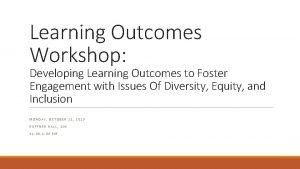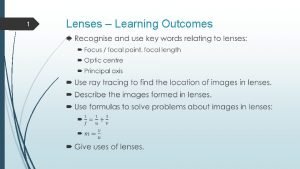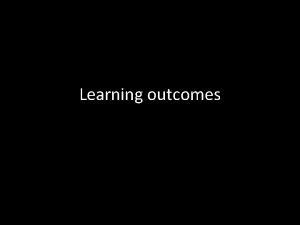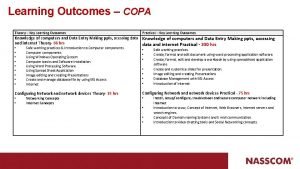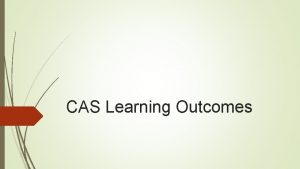SLIDE 1 SLIDE 2 LEARNING OUTCOMES At the








- Slides: 8

SLIDE 1

SLIDE 2 LEARNING OUTCOMES At the end of this module, you should: • Be familiar with the different aspects of good listening to make the survivor feel more comfortable and believed; • Understand the key approaches for appropriate communication with children who are at risk or have experienced violence; • Practice techniques for communicating with children of different ages about sensitive issues.

SLIDE 3 PRINCIPLES OF ACTIVE & POSITIVE LISTENING SKILLS S • Sitting position • Open posture O L • Lean forward • Eye contact E R • Relaxed

SLIDE 4 ACTIVITY 4: CASE SCENARIOS (1) Lucy is a 10 -year-old deaf girl who has been brought to your clinic with bruising all over her arms and legs. She is brought in by her school teacher who is concerned about Lucy’s welfare but has no further information about Lucy’s background or clinical history. What approaches can you use to communicate with Lucy?

SLIDE 5 ACTIVITY 4: CASE SCENARIOS (2) Mike is a three-year-old boy who has been brought into your clinic by his mother. As you examine him you notice unusual bruises on his belly and thighs. His mother say these were injuries after a fall. What methods can you use to communicate with Mike to get further information?

SLIDE 6 TOOLS FOR COMMUNICATING WITH CHILDREN

SLIDE 7

SLIDE 19 SUMMARY • • • Effective communication and listening happens through a combination of verbal and non-verbal skills Effective communication makes the speaker feel heard. Survivors of violence are often silenced by abusers, family members and others in the community – and even health care providers. By contrast, active and supportive listening allows survivors to be heard – an important step towards healing. Children who are too young to express themselves clearly verbally should be communicated to using alternative approaches that may include: feeling cards and pictures; role plays and drama; drawing and storytellin










